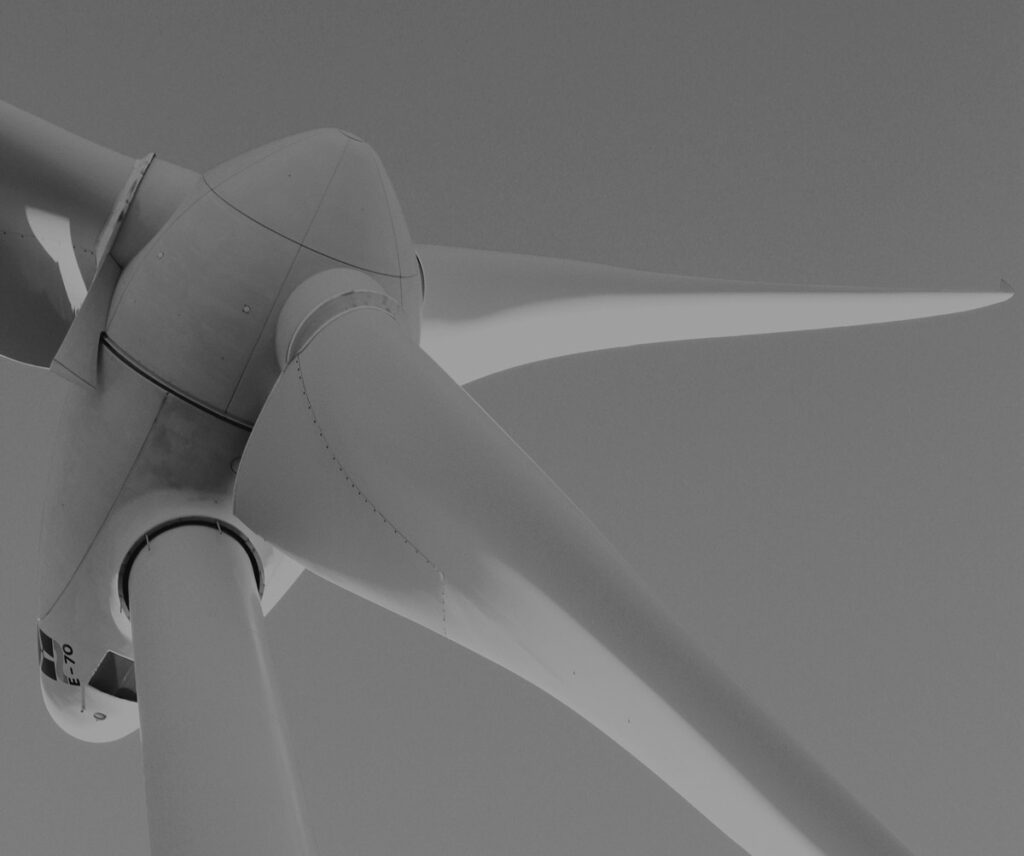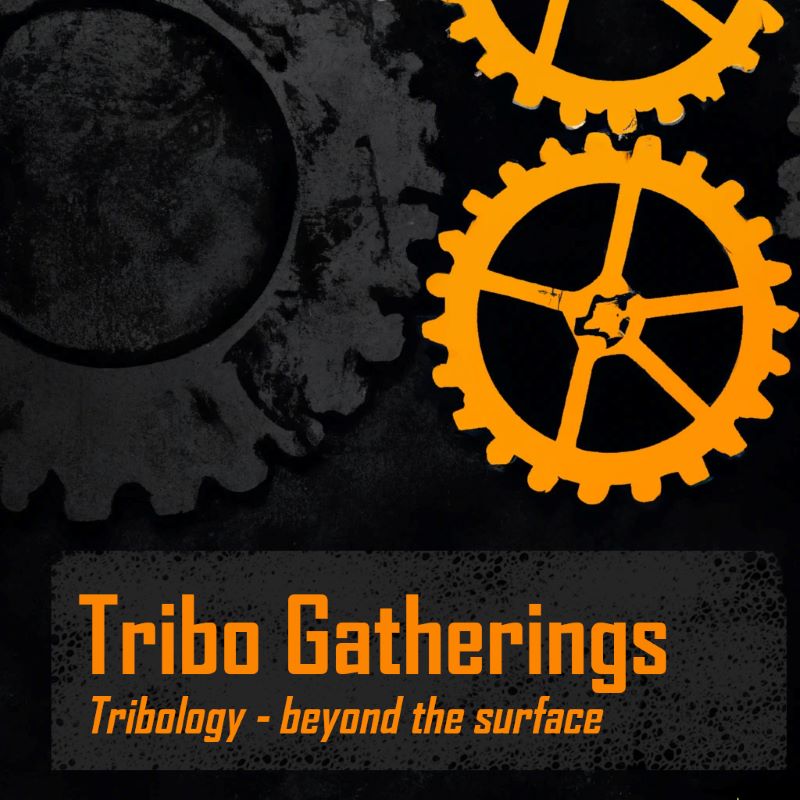As climate change becomes increasingly apparent due to rising global temperatures, countries are implementing new regulations to promote renewable energy adoption.
Renewable technologies, such as wind energy, often face cost challenges compared to non-renewable alternatives however.
Tribology can help make wind energy more competitive as an energy source by identifying problems in modern wind turbines and proposing solutions to lower failure rates, minimise downtime, and enhance efficiency.

Increasing Lifespan & Efficiency
Wind turbines pose distinct challenges for engineers and lubricant experts due to their demanding operational environment.
Wind turbines rely on large main bearings that rotate slowly but support substantial loads. These bearings are susceptible to wear over time, affecting turbine efficiency and maintenance costs.
Wind turbines’ gearboxes endure constant stress from variable wind conditions, gusts, torque reversals and electrical disturbances.
They also often operate in harsh environments, such as coastal areas with saltwater exposure.
Tribology can be used to mimic these situations and help develop new technologies to prolong the lifetime of the wind turbine components and reduce downtime.

Grease Micropitting Testing
Micropitting can occur in grease lubricated bearings, such as those found on the main shafts of wind turbines.
Micropitting is the formation of small pits on the surface of the steel, causing a gradual loss of material and eventual failure of the part. This failure mode is currently a concern in wind turbines as the cost of replacing the main bearing is very high.
We have developed a fast and repeatable micropitting test to simulate grease lubricated bearings, such as those found on wind turbine main shafts. This new method can be used to study and develop new grease formulations, as well as studying material and coating technologies for bearings.

Gearbox bearing failure by WECs
The high speed bearings in the wind turbine gearbox can sometimes fail with the formation of significant pits and axial cracks on their surface. The pits and cracks cause significant vibration in the gearbox and the wind turbine will be shut down.
The pits and cracks begin below the surface by the formation of crack networks. Under analysis these crack networks can appear bright white with an etchant – they are termed white etching cracks (WECs).
Simulating conditions experienced by bearings in wind turbine gearboxes in our lab, we use multiple accelerants to help clients investigate the mechanism of WEC formation and to help develop new products.






“We collaborated with Marc and his team at Ingram Tribology to conduct tribometer tests for our research project. They delivered high-quality results with great attention to detail and professionalism”
Maruti Sai Dhiraj Sakhamuri, Ph.D. Researcher, University of Southampton
Tribological Thinking
Find out about our latest thinking, research, news and more.
-

Understanding the Science of Skin Feel: How Biotribology Shapes Cosmetic Perception
The global cosmetics market is valued at a staggering $700 billion per year, encompassing everything from skin creams and shampoos to shower gels and makeup. It’s a fast-paced industry where innovation is essential, especially as brands move toward more sustainable, vegan, and cruelty-free formulations. A product’s success isn’t just about what’s inside the bottle—it’s about…
-
🌟 Ingram Tribology Achieves ISO 9001 Certification! 🌟
We are proud to announce that Ingram Tribology has successfully achieved ISO 9001 Certification! This globally recognised certification demonstrates our commitment to delivering the highest standards of quality across all aspects of our operations. It reinforces our dedication to meeting customer and regulatory requirements, and ensures that we continually improve our processes to provide the…
-
Introducing Our New Course: Bio-Tribology for Industry
We are excited to launch our latest training course: Bio-Tribology for Industry—designed specifically for researchers and product development scientists in the food, beverage, cosmetics, and medical industries. Why Take This Course? Understanding bio-tribology is essential for developing high-performance products that interact with the human body, whether it’s optimizing the feel of a skincare product, improving…
-

🚗⚡ Inspiring Future Engineers with Greenpower! ⚡🚗
The Greenpower Trust is an incredible charity that sparks excitement for STEM careers by giving young people the opportunity to design, build, and race their own electric cars. At Haverfordwest High VC School in Pembrokeshire, an all-female race team is gearing up to compete in the F24 Greenpower series—and we had the privilege of supporting…
-
Installation of new electrified MTM at Ingram Tribology ⚡ 🚃 🚘
We have expanded our testing capabilities with the addition of the new MTM-EC (mini traction machine electrical current)! This new instrument allows us to study the effects of electrical currents on lubricated contacts. In our growing electrified world, stray electrical currents can flow through mechanical devices. If the current is high, fluting damage can occur at the…
-
Introducing our new testing capability: tackling Electrically induced White Etching Cracks (eWECs)! ⚡🔬 🚗 👨🔧
In today’s increasingly electrified world, machine elements are often located near electric motors and generators, where they can be exposed to stray currents. Electric vehicles and wind turbines are prime examples of where this issue can arise. These stray currents can significantly impact tribological contacts, accelerating subsurface alterations in the steel and leading to premature…
-

Gear Micropitting Screening Test
Micropitting is a type of fatigue wear commonly found on gear teeth. The gradual loss of material in the form of small surface pits leads to a change in the geometry of the component; if this is not controlled, it can result in failure of the part. The standardised method of evaluating a lubricants ability…
-

Merry Christmas from all of us at Ingram Tribology
Our Christmas card this year depicts the scene of Santa enjoying the drinks left out for him near the fireplace. Santa is trying both port and hot chocolate and notices a distinct difference in the mouthfeel between the two. The port has a drier, thinner feel. Whilst the hot chocolate impacts a smoother, creamier feeling. …
-

Check out our first Tribo Gatherings Podcast
We have started a Podcast! Our first guest is Dr. Connor Myant from Imperial College. We discuss biotribology, as related to the testing of food and hip joint failures. We discuss the advances in 3D printing and how Connor moved from Tribology into 3D printing. We discuss all Connors current projects and thoughts for the…

